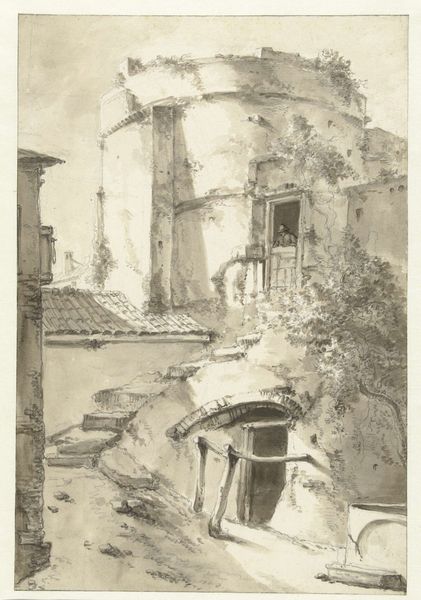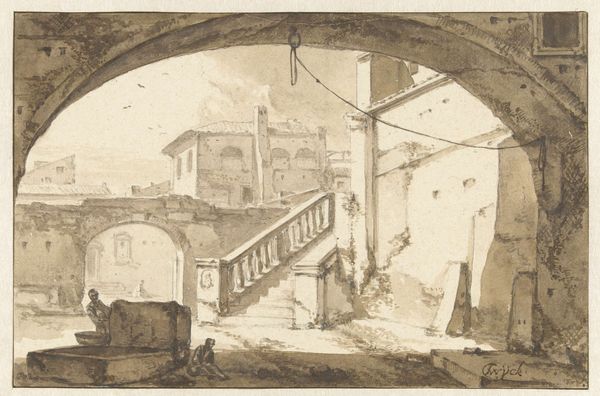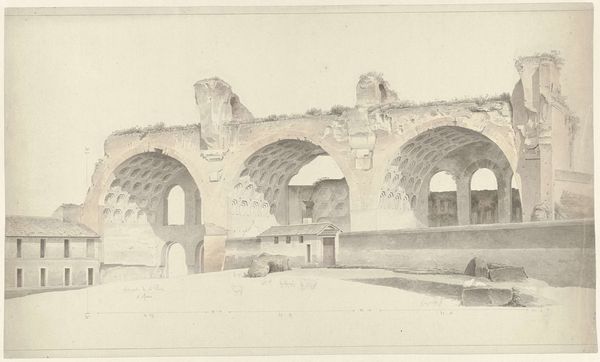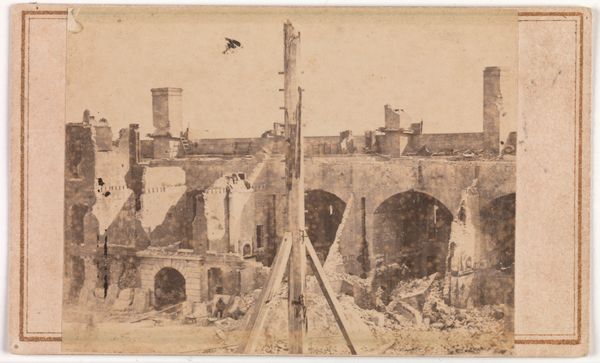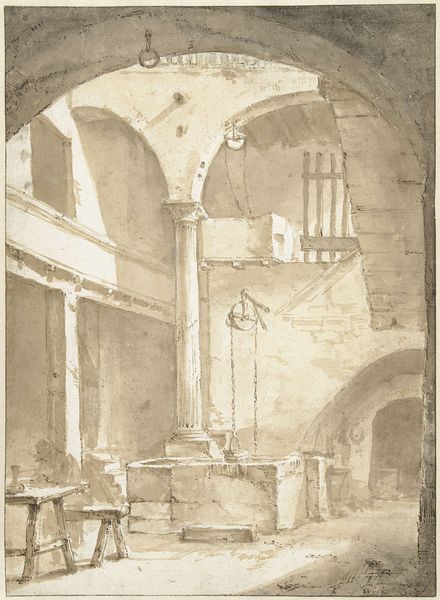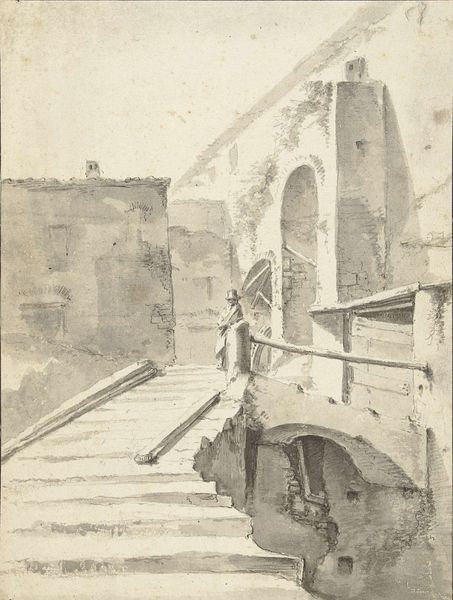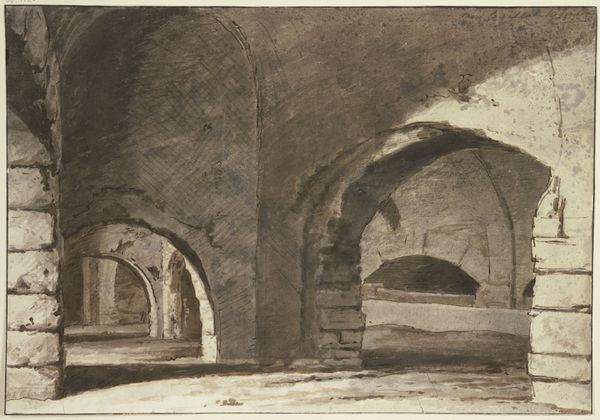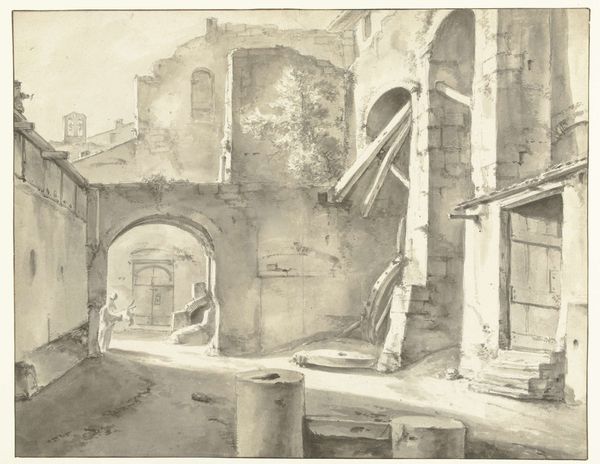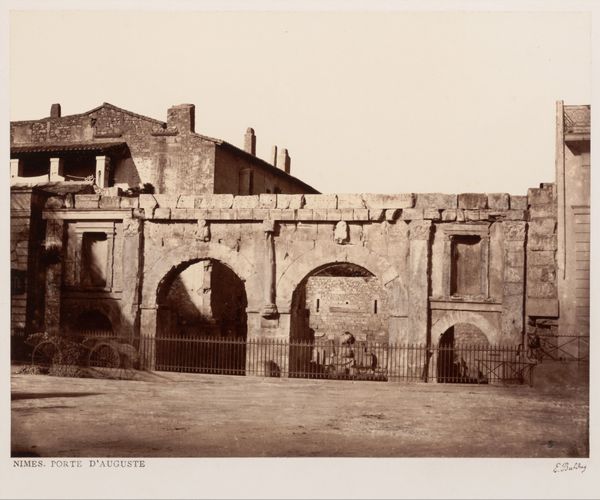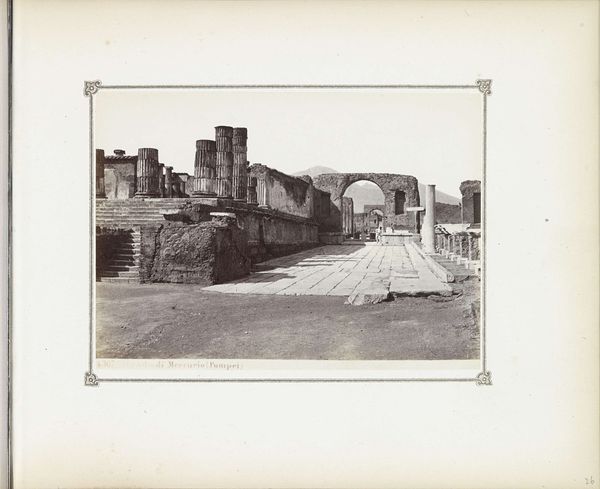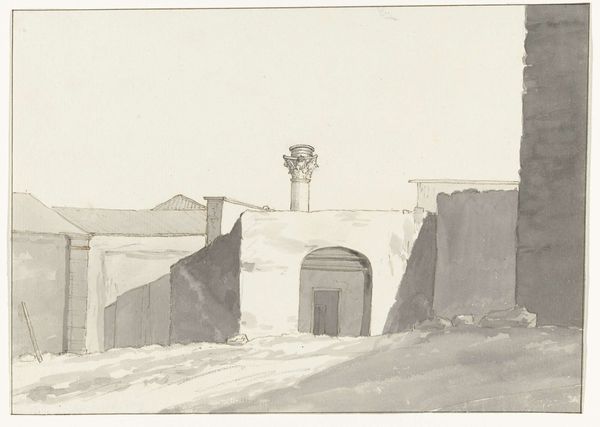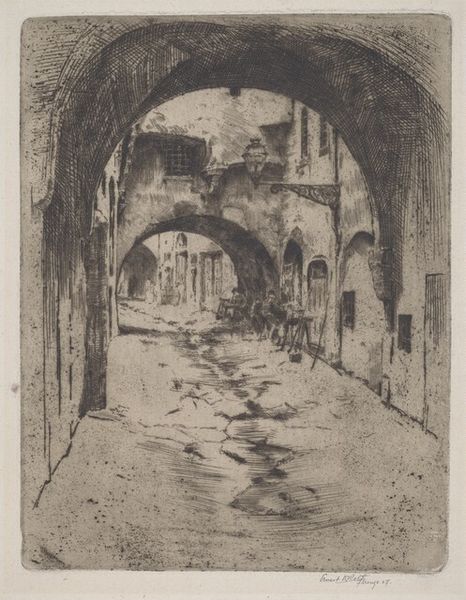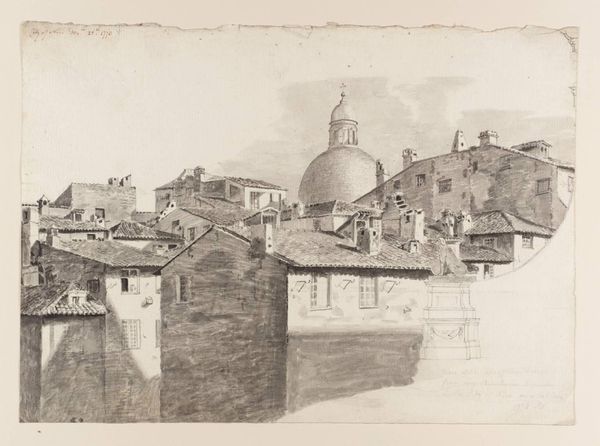
painting, watercolor
#
muted colour palette
#
dutch-golden-age
#
painting
#
landscape
#
watercolor
#
cityscape
#
genre-painting
#
watercolor
#
realism
Dimensions: height 207 mm, width 267 mm
Copyright: Rijks Museum: Open Domain
Editor: So, this is "Oude brug met woning of keldersramen onder de kade" by Kasparus Karsen, sometime between 1820 and 1896, using watercolor. It's… a bridge, some architecture. What really strikes me is how worn everything looks, the palpable decay. How do you interpret this work? Curator: Well, let's consider the materiality. Karsen's choice of watercolor is significant. It allowed for a certain speed and transparency, fitting for capturing the textures of aging infrastructure. The blurred edges speak volumes. Editor: You mean, it wasn't about making it perfectly realistic? Curator: Precisely. This piece isn't about precise architectural rendering, it's more about capturing the effects of labor and time on these urban structures. The subject of the piece focuses on something made by humans, something used by humans. What does that say? Editor: Maybe… that nothing lasts? Or maybe about how our lives impact our physical surroundings? Curator: Interesting. The fact that Karsen chose to depict the underbelly of the bridge is crucial. It spotlights the overlooked spaces shaped by industry and utility, often absent from idealized cityscapes. Editor: I hadn’t thought about the angle so much, but focusing on these areas below street level, it shifts everything. What was I even looking at before? Curator: It changes our view of urban existence by displaying that these locations exist. Through materiality and subject, the artwork underscores that the materials and production techniques are just as crucial as artistic skill. Editor: I see your point! Focusing on how things are made, and the process involved, gives us an entirely new way to interpret art, even a seemingly simple watercolor like this one.
Comments
No comments
Be the first to comment and join the conversation on the ultimate creative platform.
